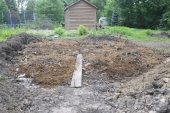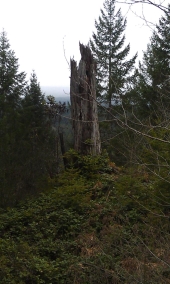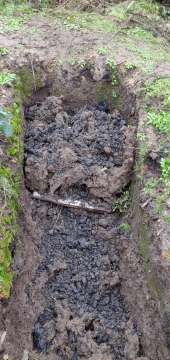
 1
1




~Starr
 1
1






 2
2




How deep must the logs be buried? Did you have to haul in top soil, or excavate another part of your property? Are you using exclusively quality garden soil, or do lower quality soils work at the beginning?
"Never doubt that a small group of thoughtful, committed citizens can change the world; indeed, it's the only thing that ever has."-Margaret Mead "The only thing worse than being blind, is having sight but no vision."-Helen Keller
 3
3








~Starr


















Has anyone built a hugel the fall before planting in the spring?
You might be surprised that the bed may keep from freezing longer than you think, since there will be decomposition happening, and it is a massive structure that is exposed to the sun during winter warm spells and in the spring. To enhance this effect with my first and only hugul (built this spring), I shaped my hugul as a Sun Scoop with a South/South East facing curve to it.I was thinking that would allow for some decomposition before planting, but realistically it'll probably just be frozen all winter.
I was thinking I would try to supplement limited soil I have with fallen leaves that are available in abundance, or at least use those to fill in between logs and branches.
"Never doubt that a small group of thoughtful, committed citizens can change the world; indeed, it's the only thing that ever has."-Margaret Mead "The only thing worse than being blind, is having sight but no vision."-Helen Keller










 2
2




Has anyone built a hugel the fall before planting in the spring?
You might be surprised that the bed may keep from freezing longer than you think, since there will be decomposition happening, and it is a massive structure that is exposed to the sun during winter warm spells and in the spring. To enhance this effect with my first and only hugul (built this spring), I shaped my hugul as a Sun Scoop with a South/South East facing curve to it.I was thinking that would allow for some decomposition before planting, but realistically it'll probably just be frozen all winter.
I was thinking I would try to supplement limited soil I have with fallen leaves that are available in abundance, or at least use those to fill in between logs and branches.
"Never doubt that a small group of thoughtful, committed citizens can change the world; indeed, it's the only thing that ever has."-Margaret Mead "The only thing worse than being blind, is having sight but no vision."-Helen Keller





Transplanted gardener trying to start over in a strange new land - all advice gratefully accepted!

|
So glamorous! Now do this tiny ad!
GAMCOD 2025: 200 square feet; Zero degrees F or colder; calories cheap and easy
https://permies.com/wiki/270034/GAMCOD-square-feet-degrees-colder
|



